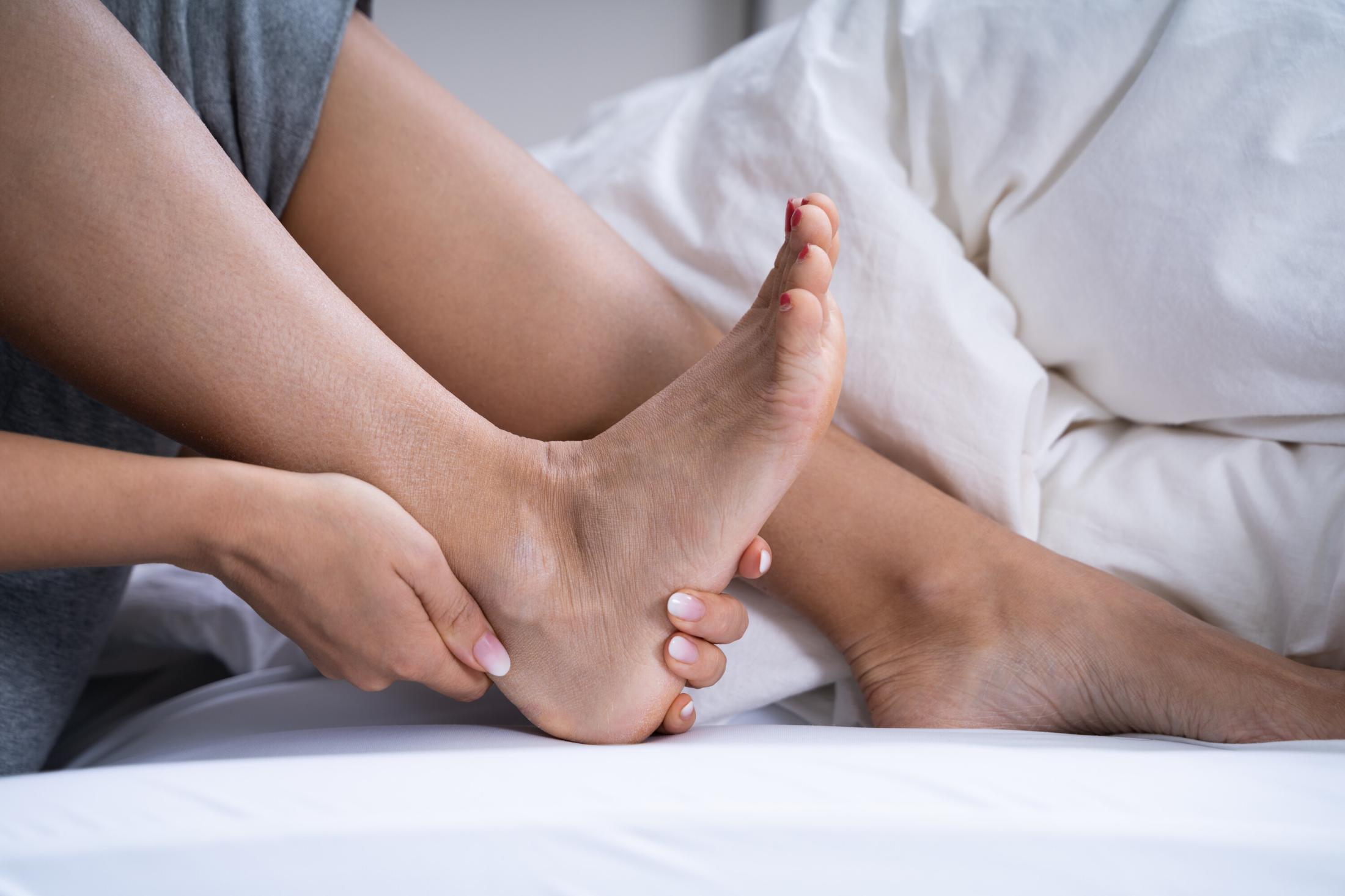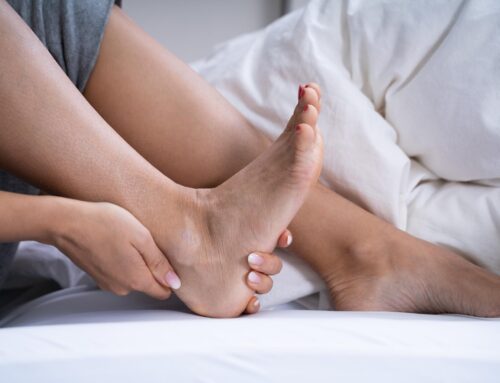Compression Sleeves provide targeted support by applying gentle pressure to specific areas of the body, helping to improve circulation, reduce swelling, and speed up recovery. Factors like compression level, fit, and material all determine how well it works for your needs.
A sleeve that’s too tight or too loose won’t be as effective, but the right fit can provide the perfect balance of support and comfort.
What Are Compression Sleeves?
Compression sleeves are elastic garments designed to apply consistent pressure to specific areas of the body, such as the arms, legs, knees, and ankles. Their primary purpose is to improve circulation, reduce muscle fatigue, and support recovery by promoting better blood flow and reducing swelling.
Support and Circulation Benefits
The controlled compression exerted by support sleeves helps stimulate blood flow, preventing blood from pooling in the limbs and encouraging oxygen-rich circulation. This process reduces muscle soreness, minimizes swelling, and speeds up recovery from physical activity or injury.
Compression sleeves also provide structural support to muscles and joints, helping to reduce strain and fatigue during movement. Athletes often wear them to enhance performance and endurance, while individuals recovering from injuries or surgeries rely on them for added stability and pain relief.
Materials and Features
Elastic bandage wraps are made from a blend of stretchable and breathable materials that offer a balance of support and comfort. Common materials include:
- Nylon and Spandex: Provides a snug, flexible fit with moisture-wicking properties
- Neoprene: Offers warmth and additional joint support, ideal for injury recovery
- Medical-Grade Fabrics: Designed for post-surgical recovery or chronic conditions like lymphedema and varicose veins
Features to look for in compression sleeves include:
- Graduated Compression: Tighter at one end to promote upward blood flow
- Moisture-Wicking Fabric: Helps keep skin dry and prevents irritation
- Seamless or Flat-Lock Stitching: Reduces friction and enhances comfort
- Anti-Slip Design: Ensures the sleeve stays in place during movement
Benefits of Using a Compression Sleeve
Compression sleeves offer a range of benefits for people recovering from injuries, managing chronic conditions, or looking to improve performance and endurance. By applying controlled pressure, these sleeves help with circulation, muscle support, and overall recovery.
Improves Blood Circulation and Reduces Swelling
One of the primary benefits of compression sleeves is their ability to enhance blood flow. The gentle, graduated pressure encourages blood to move efficiently back toward the heart, preventing pooling in the extremities. This process is especially beneficial for individuals who experience swelling (edema) or poor circulation due to prolonged sitting, standing, or medical conditions.
By improving circulation, compression sleeves help:
- Reduce swelling in the legs, arms, and joints
- Minimize the risk of blood clots, particularly for those with circulatory issues
- Prevent fluid buildup that can cause discomfort and stiffness
Supports Muscles and Reduces Fatigue
Compression sleeves act as a support system for muscles and joints, reducing strain and fatigue during physical activity. Athletes often wear them to enhance endurance and decrease the risk of muscle soreness after intense workouts.
Muscle-support benefits include:
- Stabilizing muscles and reducing micro-tears that cause soreness
- Decreasing muscle vibration, which can lead to quicker fatigue
- Supporting weak or injured joints during activity
This added stability makes compression sleeves ideal for runners, weightlifters, and individuals recovering from joint injuries.
Speeds Up Recovery After Exercise or Injury
Whether recovering from a workout or an injury, support sleeves help muscles heal faster by increasing oxygen delivery and reducing inflammation. This makes them a valuable tool for athletes and individuals rehabilitating after surgery or an accident.
- Improves oxygen flow to muscles, reducing recovery time
- Decreases post-exercise soreness by preventing lactic acid buildup
- Provides gentle compression that eases muscle stiffness and discomfort
Wearing a compression sleeve after a workout or injury can help maintain mobility while reducing pain and inflammation.
Helps Manage Chronic Conditions
Compression therapy is widely recommended for managing chronic conditions that affect circulation and fluid retention. Medical-grade compression sleeves provide targeted relief for individuals with conditions such as:
- Lymphedema: Reduces fluid buildup and swelling in the arms or legs
- Varicose Veins: Supports weakened veins, reducing pain and discomfort
- Deep Vein Thrombosis (DVT): Helps prevent blood clot formation
- Arthritis and Joint Pain: Provides warmth and stability for stiff joints
For individuals dealing with these conditions, wearing a properly fitted compression sleeve can significantly improve comfort and daily mobility.
Types of Compression Sleeves
Compression sleeves come in various forms, each designed to target specific areas of the body. Whether for sports recovery, injury prevention, or managing circulation issues, selecting the right type ensures maximum benefits.
Arm Sleeve
Arm compression sleeves are commonly used by athletes, individuals with circulation concerns, and those recovering from injuries. They provide muscle support, enhance blood flow, and reduce swelling in the arms.
These sleeves help prevent muscle fatigue, reduce strain from repetitive movements, and provide warmth that can ease joint stiffness.
Ideal for:
- Athletes (basketball players, tennis players, weightlifters)
- People recovering from arm injuries or surgeries
- Individuals with poor circulation or lymphedema in the arms
Leg Sleeve
Leg compression sleeves cover the entire lower leg and are beneficial for runners, individuals with varicose veins, and those who stand for long hours. By promoting better circulation, they help reduce swelling and improve endurance.
Leg sleeves also provide additional muscle support, reducing the impact on joints and minimizing fatigue during prolonged activity.
Ideal for:
- Runners and endurance athletes
- Healthcare workers, retail employees, and anyone on their feet all day
- Individuals prone to leg swelling, poor circulation, or deep vein thrombosis (DVT)
Knee Sleeve
Knee compression sleeves offer joint stability and pain relief, making them an excellent choice for individuals with arthritis, previous knee injuries, or those recovering from surgery. The compression helps reduce swelling, support ligaments, and improve mobility.
These sleeves provide warmth and gentle pressure, which can help reduce inflammation and stiffness in the knee joint.
Ideal for:
- People with arthritis, tendonitis, or meniscus injuries
- Athletes who need extra knee support during workouts
- Post-surgical recovery and injury rehabilitation
Calf Sleeve
Calf compression sleeves are designed to improve circulation in the lower legs and reduce muscle strain, making them a popular choice for athletes and individuals who stand or walk for extended periods.
By reducing muscle vibration and improving blood flow, calf sleeves help minimize discomfort and promote faster recovery.
Ideal for:
- Runners and hikers prone to shin splints
- People with varicose veins or circulation issues
- Individuals who experience leg fatigue and swelling from long hours of standing
Ankle Sleeve
Ankle compression sleeves provide targeted support for sprains, swelling, and post-injury recovery. They are lightweight, flexible, and help stabilize the ankle while maintaining a full range of motion.
Ankle sleeves can help reduce inflammation, improve stability, and provide mild compression to aid in recovery and prevent future injuries.
Ideal for:
- Individuals recovering from ankle sprains or injuries
- People experiencing swelling due to fluid retention or circulation issues
- Athletes looking for extra support during physical activity
Choosing the Right Compression Sleeve
Each type of compression sleeve serves a specific function, whether for muscle recovery, pain relief, or circulation support. Selecting the right one depends on individual needs and lifestyle, ensuring optimal comfort and effectiveness.
Selecting the right compression sleeve is essential for maximizing its benefits, whether for recovery, circulation support, or injury prevention. Choosing the wrong sleeve can result in discomfort or reduced effectiveness. Below are factors to consider when making your selection.
Compression Level
Compression sleeves come in different pressure levels, measured in millimeters of mercury (mmHg).
Choosing the right level depends on the purpose of use:
- Mild Compression (8-15 mmHg): Ideal for daily wear, minor swelling, and general circulation support.
- Moderate Compression (15-20 mmHg): Helps reduce fatigue, mild varicose veins, and post-exercise recovery.
- Medical-Grade Compression (20-30 mmHg or higher): Used for managing chronic conditions like lymphedema or deep vein thrombosis (DVT) and should be fitted by a professional.
Material
The material of a compression sleeve affects its comfort, breathability, and durability. Look for breathable, moisture-wicking materials to prevent irritation and ensure comfort for extended use.
Common materials include:
- Nylon and Spandex: Provides flexibility and moisture-wicking properties.
- Neoprene: Offers additional support and warmth, often used for joint compression.
- Medical-Grade Fabrics: Designed for long-term wear, often recommended by healthcare professionals.
Fit and Size
A compression sleeve should provide a snug but comfortable fit. If it is too tight, it may restrict circulation instead of improving it. If it is too loose, it won’t provide adequate support.
- Measure the circumference of the limb at the recommended points (e.g., calf, knee, or forearm) to ensure proper fit.
- Look for anti-slip grips or bands to keep the sleeve in place during movement.
When to Wear Compression Sleeves
Compression sleeves can be worn at different times depending on the intended use:
During Activity
Athletes and physically active individuals wear compression sleeves during workouts, training, or competitions to improve performance and reduce muscle fatigue. The gentle pressure helps stabilize muscles, minimizing micro-tears and vibrations that can lead to soreness.
Runners, cyclists, weightlifters, and basketball players frequently use leg, calf, or arm compression sleeves to enhance endurance and maintain muscle efficiency.
After Exercise or Injury
Compression sleeves are highly effective for post-workout recovery and injury rehabilitation. Wearing them after intense exercise helps reduce muscle soreness by improving circulation and preventing fluid buildup. They also provide support for healing muscles, tendons, and ligaments.
For athletes or active individuals, keeping a compression sleeve on for a few hours post-exercise can reduce soreness and promote faster recovery.
Daily Use
People with chronic conditions such as varicose veins, arthritis, lymphedema, or deep vein thrombosis (DVT) often wear compression sleeves throughout the day. The constant gentle pressure helps regulate circulation, reduces swelling, and eases discomfort.
For chronic conditions, a medical-grade compression sleeve may be recommended by a healthcare provider to ensure the right level of pressure and fit.
Travel and Extended Sitting
Long flights, road trips, or sitting at a desk for extended periods can cause blood to pool in the lower limbs, leading to swelling and discomfort. In some cases, prolonged inactivity increases the risk of deep vein thrombosis (DVT), a condition where blood clots form in the veins.
For frequent travelers or those with a sedentary lifestyle, wearing calf or leg compression sleeves can keep circulation flowing and reduce the discomfort caused by extended sitting.
Support, Recovery, and Comfort
Compression sleeves are a simple yet effective way to improve circulation, reduce muscle fatigue, and support recovery. Whether you’re an athlete looking to enhance performance, recovering from an injury, or managing a condition like varicose veins or lymphedema, the right sleeve can make a big difference in how you feel and move.
The right compression level, material, and fit can provide the support you need, while an ill-fitting sleeve may be uncomfortable or ineffective. When chosen correctly, a compression sleeve can help with everything from reducing swelling to improving mobility and easing discomfort.
If you’re in Toronto, Care-Med offers a selection of high-quality compression sleeves along with expert fittings and personalized guidance. Whether you need support for sports recovery, medical-grade compression, or injury rehabilitation, their team can help you find the best option. Book an appointment with Care-Med to find the right solution for better support, faster recovery, and improved circulation.
Share This Story, Choose Your Platform!
Table of Contents
We specialize in orthotics, body braces, and compression wear tailored to your unique needs in Toronto. Reach out to us at info@caremed.care or call 416-782-5353 to book your fitting and consultation.
Experience the difference of customized solutions designed just for you.











